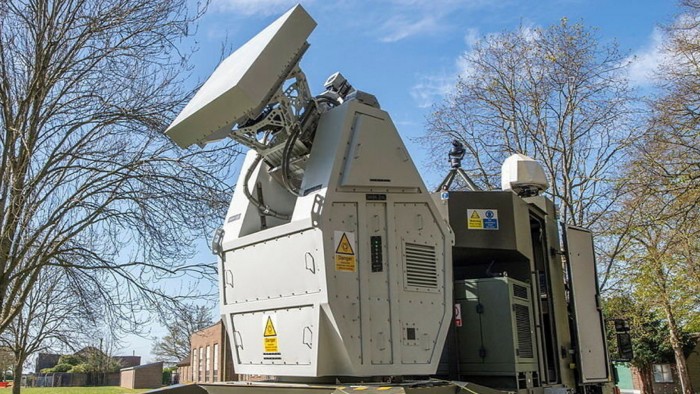Unlock the Editor’s Digest for free
Roula Khalaf, Editor of the FT, selects her favourite stories in this weekly newsletter.
The UK Ministry of Defence has successfully trialled a new type of electronic weapon to combat drones that has potential implications for modern battlefields, including in Ukraine.
The “RapidDestroyer” is designed by a consortium led by French defence conglomerate Thales, and uses a high-power radio frequency to disable or fry electronics in drones at a distance.
Two swarms of eight drones were neutralised by the weapon in a recent trial, the MoD announced on Thursday, while “the project saw more than 100 drones being tracked, engaged and defeated using the weapon across all trials.”
The technology is still in early stages: the “RapidDestroyer” is carried on the back of a flatbed truck and requires a large amount of power.
A US equivalent, the Tactical High-power Operational Responder (THOR) designed by the US Air Force and a number of private companies, is the size of a shipping container. Other versions include the Leonidas, which has been designed by tech company Epirus for the US Navy and is to be used on board ships.
Since Russia’s full-scale invasion of Ukraine in 2022, both armies have used drones to deadly effect, both for surveillance and to deploy — or be used as — missiles.
Drones have caused or assisted up to 80 per cent of combat casualties in the Ukraine war, according to Roman Kostenko, the chair of the defence and intelligence committee in Ukraine’s parliament.
Numerous, small and cheap, drones represent a difficult target for countermeasures, which can only hit one target at a time and can be expensive.
The new electromagnetic weapons technology fires a wide beam of energy that is relatively cheap and capable of taking down multiple drones at a time. Experts say this makes the weapon effective when faced with an opposing swarm, though its indiscriminate nature makes it less suited for defending infrastructure, such as an airport.
“High-powered microwave systems are potentially a very effective tool for defence against large numbers of [drones] and potentially cruise missiles as well, in circumstances where their wide cone of effect does not create more problems than it solves,” said Justin Bronk of the Royal United Service Institute in London.
“For certain circumstances, like bases out in the desert, or at a kinetic front line where you’re not hugely concerned about stuff that’s going in the direction of the enemy, or for warships at sea, yes, absolutely, they offer a significant increase in counter-drone capability, but they are not a one-size-fits-all solution.”
The Ukraine war has been a see-saw battle in which electronic warfare has played a critical role, and has compromised precision technologies, such as US-supplied M142 Himars missiles, which are GPS-guided, due to jamming. Drones have emerged as a significant battlefield force, but they must navigate “a wall of electronic jamming”, said one senior UK military official.
“It’s a measures [vs] countermeasures game,” he said, adding that there were ways drones could be protected from microwave weapons, such as protecting their circuits with materials that block external electric fields.
Ultimately, the technology is aimed at missile defence as well. The US Navy has announced that it will test a high-power microwave weapon known as Project Meteor in 2026 that is capable of taking down fast-moving anti-ship ballistic missiles.
Graphic by Ian Bott and Bob Haslett




